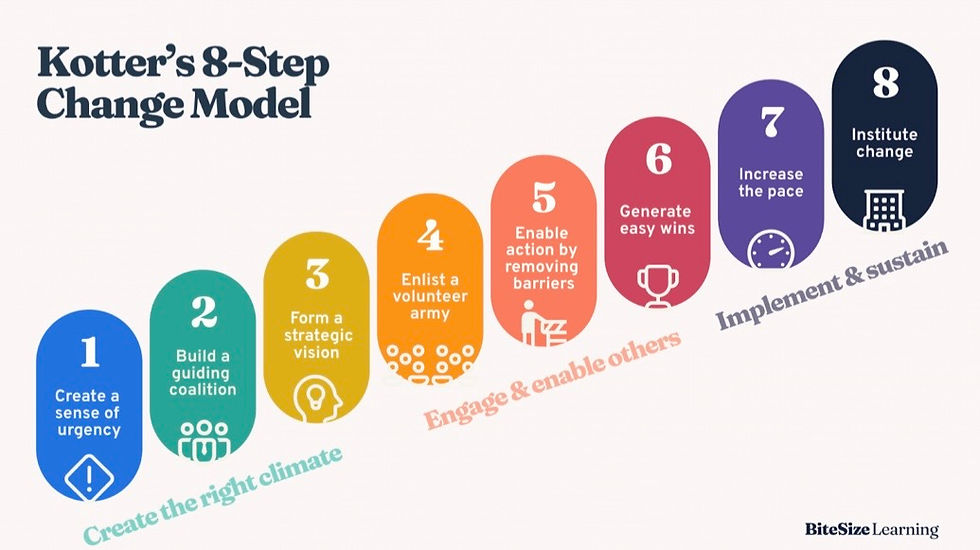Why Most Agency Change Efforts Fail (and What to Do Instead)
- Neil Adams

- Sep 15, 2025
- 3 min read
A few years back, I rolled out a new system in my agency that I was convinced would transform how we worked. It was efficient, logical, and on paper it ticked every box. The problem? Nobody used it.
Instead of excitement, I got resistance. Blank looks in meetings. Quiet side conversations. And eventually, a creeping sense that the team were finding ways to work around it rather than with it.
At the time, I thought: What’s wrong with them?
Looking back, the real question was: What’s wrong with how I introduced it?
The Myth of “Rational” Change
As agency leaders, we often assume that if something makes sense, people will naturally get behind it. New system, new process, new way of working – surely they’ll see the logic.
But people don’t resist change itself. They resist being changed.
That’s why change management is so tricky. It isn’t a straight line from idea to adoption – it’s a curve. The change curve (see below), to be exact: denial, resistance, exploration, commitment. If you’re hitting resistance, it doesn’t necessarily mean you’ve failed. It means people are being human.

This is where a bit of structure helps. John Kotter’s 8-step model, for example, is a simple but powerful way of thinking about change:
Create urgency.
Build a guiding coalition.
Form a vision.
Communicate it (again and again).
Remove obstacles.
Create short-term wins.
Build on the change.
Anchor it in culture.

Not a checklist to be slavishly followed, but a reminder that change is a process, not an announcement.
And then there’s stakeholder mapping – who actually holds influence, who will feel the pain of change, who could be your early champions? When you put this down on paper, it’s surprising how often you realise you’ve been talking to the wrong people, or at the wrong time.

Culture and Buy-In
The turning point for me came later, when I approached things differently. Instead of springing a change on the team, I involved them early. I listened to their objections, let them shape the rollout, and crucially, celebrated small wins along the way.
The result? The same people who once resisted were now advocating for the change. Ownership had flipped.
It taught me a lesson I wish I’d learned earlier: culture eats process for breakfast. You can have the neatest plan in the world, but if people don’t feel part of it, it will never stick.
From Resistance to Momentum
When change starts to work, you feel the shift. Suddenly, instead of you pushing, the team are pulling. They’re suggesting improvements, they’re sharing wins, they’re driving momentum themselves.
And that’s the real goal. Not compliance, but commitment.
What Agency Leaders Can Do Today
If you’re staring down the barrel of a big change – whether it’s a new system, a culture shift, or something as fundamental as adopting AI – here are three moves worth making today:
Map your stakeholders. Know who really matters in making this work.
Identify short-term wins. Change needs proof points people can see and feel quickly.
Involve your team early. Earlier than feels comfortable. Let them shape it, not just receive it.
Change is never smooth. But it’s in those rough edges where leadership really shows up.
If you’re wrestling with a change in your agency right now, I’ve got some practical tools I’m happy to share – just hit reply or drop me a message. Sometimes a fresh lens is all it takes to turn resistance into momentum.







Comments